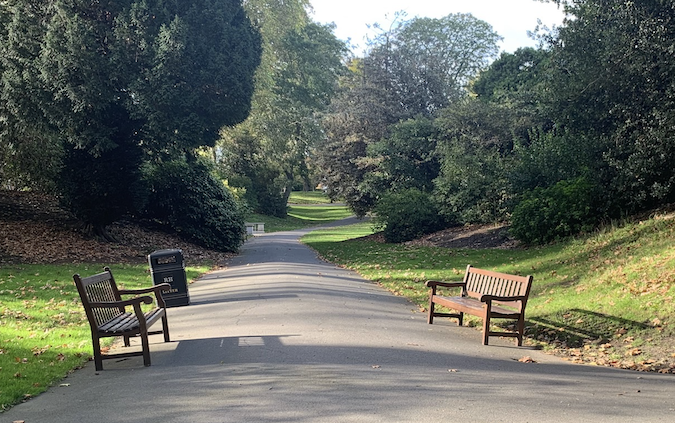If you were looking for pleasure in late 18th century London there was only one place to go: Ranelagh Gardens. It was the Tinder and Spotify of its day, providing dating opportunities with seductive music. Edward Gibbon, author of the Decline and Fall of the Roman Empire, described it as “the most convenient place for courtships of every kind – the best market we have in England.”
The Gardens were situated at what is now the Thames-side end of Christopher Wren’s Royal Hospital in Chelsea. There is still a park there on the site called Ranelagh Gardens (pictured below), though all the buildings – including a huge Rotunda (pictured above) at which a nine-year old Mozart performed in 1765 – have long since gone. It opened in 1742, a time when Vauxhall Gardens over the river was in decline having entertained Londoners for almost 200 years.
Vauxhall also had a reputation as a pick up joint, but Ranelagh had a certain social cachet. It was twice as expensive as Vauxhall yet, interestingly, became a place where different social classes – well, upper and middle-classes at least – could meet and even date. Class distinction was preserved by five different levels of pricing. There was even a separate place built for servants, who needed to be nearby in case called upon by their masters. But these devices could not prevent the classes mingling, even though it was against the wishes of the proprietors. Horace Walpole commented: “It has totally beat Vauxhall. You can’t set your foot without treading on a prince, or Duke of Cumberland.”

The Gardens were so named because they sat on the site of Ranelagh House, constructed in 1688–89 by The Earl of Ranelagh, treasurer of the adjacent Chelsea Hospital. It was so successful that it spawned lookalike gardens with the same name in Paris and New York. But a decline began at the turn of the century. The rotunda was closed in 1803 and pulled down two years later. We don’t know if the bricks were recycled elsewhere, but it is known that the organ – which Mozart may have played – went to All Saints Church in Evesham until the Victorians replaced it.


Dear Vic,
In retirement I have gone back to college; unfortunately, not BNC but Kings London. I am doing an MA in music. Writing an essay on the pleasure gardens at the time of the Mozart’s stay in London, I came across this article and have shamelessly extracted the Gibbon quote. My study of the pleasure gardens has taught me a great deal about 18th century London which I did not know. Mozart’s father really rated Ranelagh and Vauxhall; if you wish, I c an send you copies of the letter he wrote about them. Good to make contact, in this unlikely way!